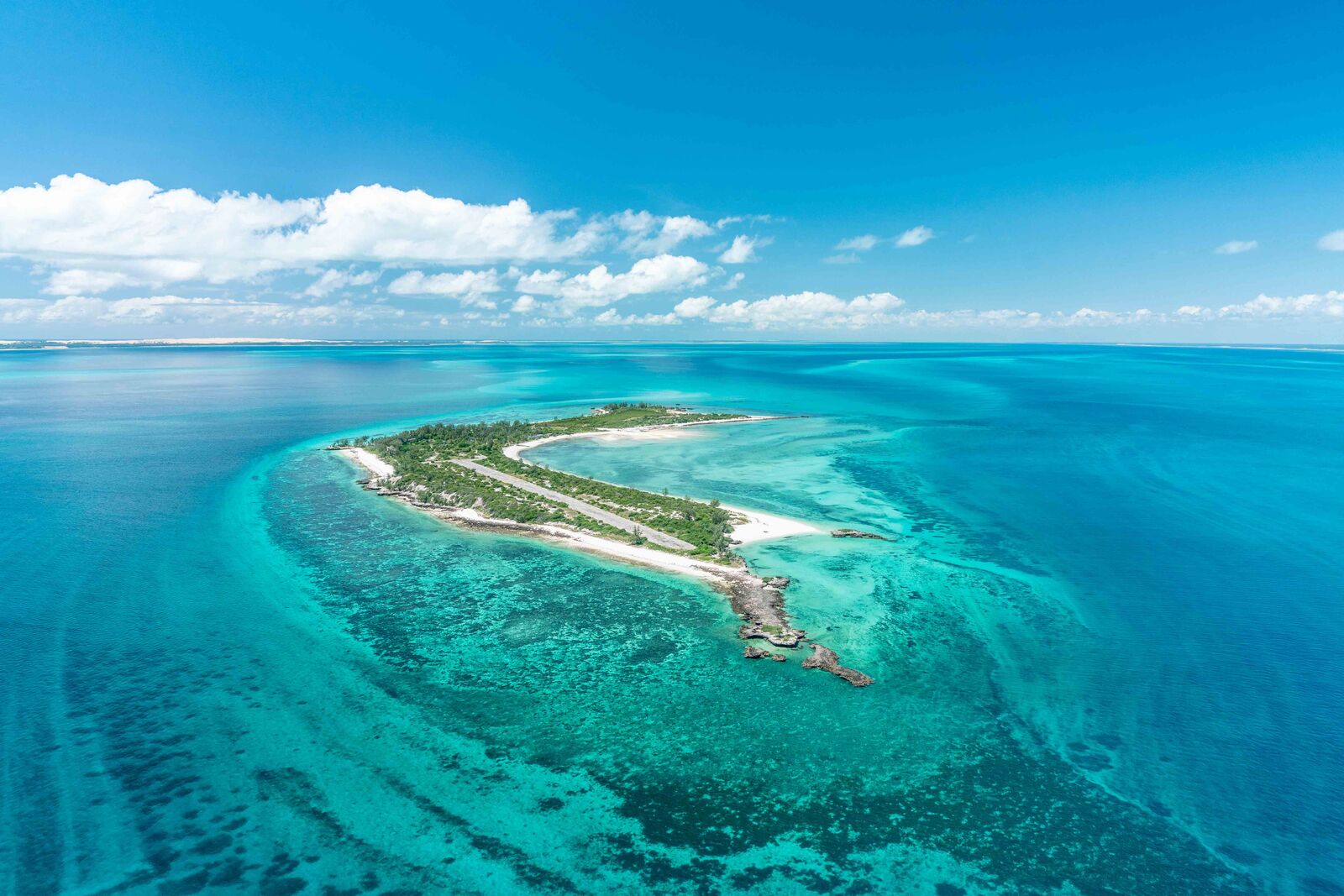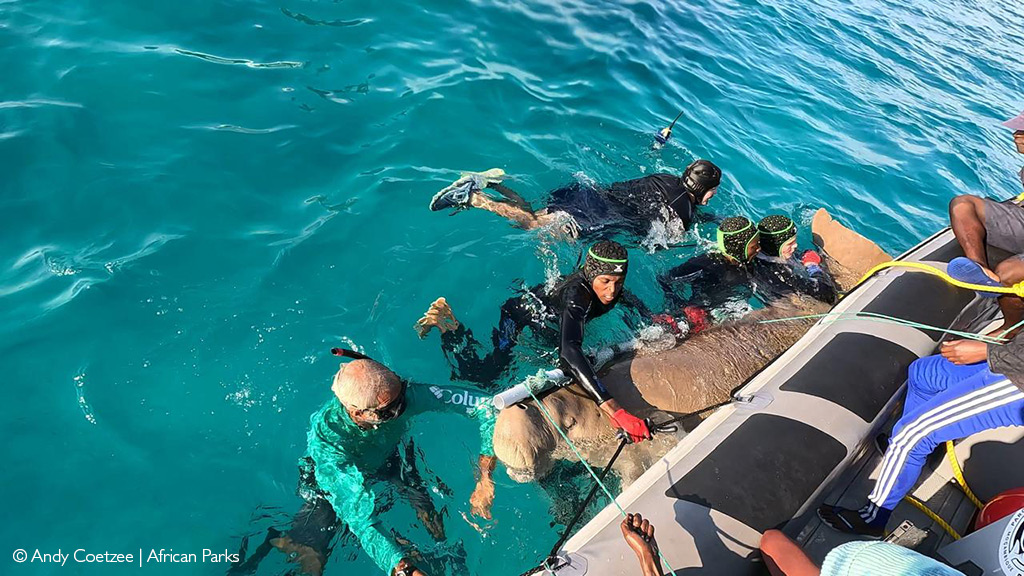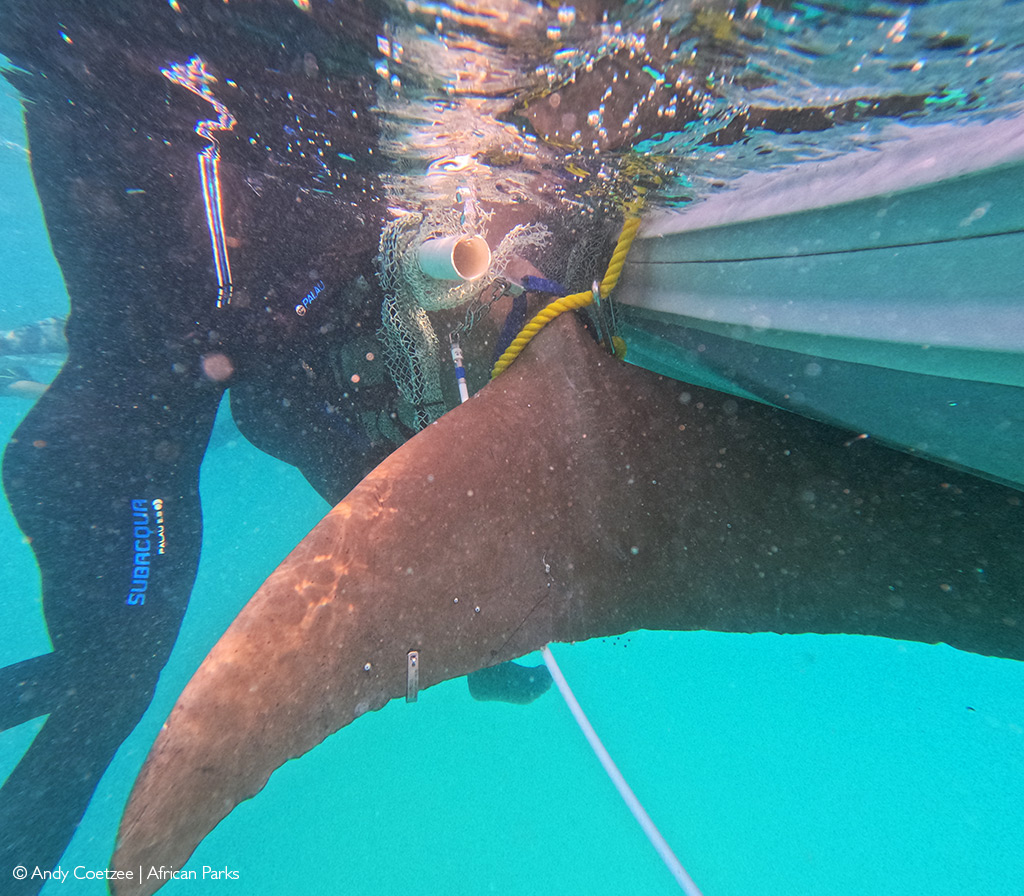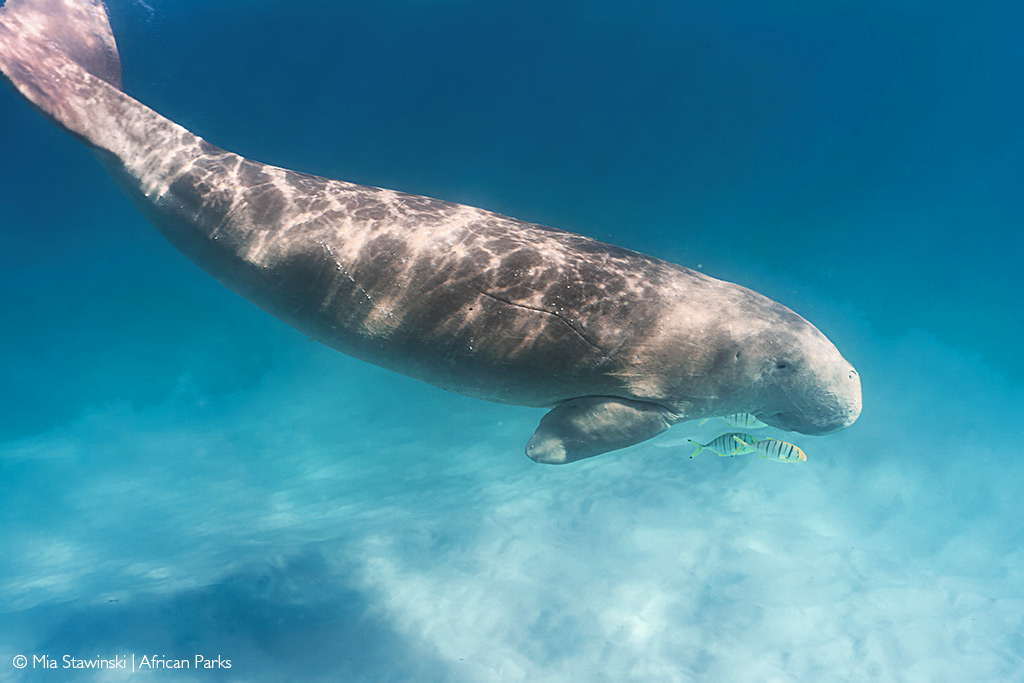
African Parks and the government of Mozambique are taking steps to conserve the last-known viable population of dugongs on Africa’s east coast. However, a deeper local understanding of the elusive lives of these marine mammals is necessary if a strategic and informed conservation approach is to be rolled out in the Bazaruto Archipelago seascape. Lorena Matos, Assistant Research and Monitoring Coordinator for African Parks, explains the project.
Since 2017, aerial surveys have confirmed that just a few hundred dugongs remain along the Inhambane coastline, which includes the 1,430km² and five islands that make up Mozambique’s Bazaruto Archipelago National Park.
With such low numbers, losing any individuals could devastate the population’s future survival. After leading efforts to have this subpopulation listed as critically endangered on the IUCN red list in 2022 and identifying key risks to the species, Bazaruto’s research team is now focused on the next phase in preventing the disappearance of Africa’s dugongs.
To do this, African Parks and the Mozambican government launched Africa’s first-ever dugong satellite tagging project. Coupled with aerial survey data, the detailed information from satellite tagging will generate a better understanding of individual dugong movements and habitat use. It will inform our approach to conservation, community development and future management of the protected area.
Most importantly, for this to have long-term success, partnerships with government and communities and the upskilling of local researchers and technical support are required to protect this incredible animal – both on Africa’s east coast and around the world.

Conserving dugongs
As signatories to the High Ambition Coalition, Mozambique’s government has committed to protecting 10% –12% of its marine and terrestrial areas by 2030 (in efforts to walk towards the Global Biodiversity Framework’s 30×30 goal – a worldwide initiative for governments to designate 30% of Earth’s land and ocean area as protected areas by 2030). Efforts to protect the dugong in Bazaruto are a key part of this strategy.
Dugong conservation efforts are strongest in geographic areas where there is already community awareness and support.
This type of large-scale marine conservation requires a solution that benefits all who depend on the seascape, protects Mozambique’s marine and terrestrial biodiversity, and supports the needs of local communities.

Tagging dugongs allows the gathering of data that plays a crucial role in developing a workable conservation strategy.
After receiving initial technical training from Dr Christophe Cleguer – an Australian dugong tagging expert and senior research officer at James Cook University, Bazaruto’s research and monitoring coordinator, Evan Trotzuk, invited the university to help deliver the first-ever tagging operation for Bazaruto. With their support, six of the park’s locally employed staff were trained to capture, tag, and sample dugong.

Threats to dugongs and community buy-in
Dugongs play a vital role in supporting marine biodiversity. As they graze seagrass, these solitary creatures improve the health and resilience of important underwater habitats, supporting many other fish, turtle, mollusc and crustacean species. Along with strengthening ecosystems, a healthier ocean benefits the local fishing trade, providing economic opportunities and increased food security for thousands of coastal communities.
In turn, improving fishing practices can help protect sensitive marine habitats. Illegal gill nets represent the biggest threat to the species – indiscriminately entangling and drowning dugongs. Seine nets also threaten dugongs as they destroy seagrass meadows and, when left unattended, can entangle and drown the mammals. The Bazaruto Archipelago National Park management team has been working with local fishing communities to reduce the use of gill nets and improve the management of seine netting.
Despite some misconceptions amongst local anglers about marine conservation efforts and regulations, these efforts are beginning to pay off. Having seen the value of protecting aquatic life for healthy ecosystems, fish stocks, and tourism (island communities receive 16% of the revenue earned in the national park), local anglers are beginning to avoid using gill nets. In recent meetings to raise awareness ahead of the dugong tagging initiative, communities were enthusiastic and in favour of the project.
Conservation data
The dugong range extends from the east coast of Africa to the Pacific islands of New Caledonia and Vanuatu, with significant numbers occurring in Northern Australia and throughout the Arabian Gulf. However, the status of dugongs has yet to be discovered in about 50% of its range. Since dugong movements are predominantly individualistic, at least 10% of a dugong population count must be tagged to gain reliable data and to obtain the big picture of habitat use to identify movement corridors.
During the tagging operation, which took three weeks, 11 dugongs (seven males and four females) were successfully tagged. These specially designed satellite transmitters are attached to the dugong’s tails. These are designed to corrode and break off over six months naturally (and also easily break off if the animal becomes entangled).


The data received so far has been extremely valuable. While some individuals are relatively sedentary, some have moved further north, and others have moved south, out of the Bazaruto MPA.
The area in the north towards Mozambique’s Save River is mainly focused on further protection measures as it has previously been noted as a dugong hotspot. Discussions between African Parks and the Mozambican government are exploring extending conservation management activities further north of Bazaruto Archipelago National Park, where active ranger patrols can be carried out to mitigate illegal fishing practices. The data from the tags will go a long way in determining the extent of the area that needs to be included in the MPA.
The journey to safeguard the last-surviving dugongs on Africa’s east coast is fraught with challenges, yet we can make significant progress thanks to initiatives like the satellite tagging project. However, long-term success hinges on sustained collaboration with local communities and the Mozambican government. By nurturing local expertise and prioritising community engagement, a resilient conservation framework can be created that protects the dugongs of the Bazaruto Archipelago. These initiatives will also safeguard the broader marine biodiversity that dugongs support and bring greater prosperity and stability to the communities that depend on this unique marine environment.

Further reading
Africa’s migratory animals – from wildebeest & birds, to dugongs & whales – are under threat due to habitat loss and climate change. Read about the UN report outlining the threat here
Mozambique’s Bazaruto Archipelago has fascinating creatures, breathtaking scenery & amazing biodiversity. Read more about Bazaruto Archipelago National Park here
Kingsley Holgate & his Afrika Odyssey team are connecting 22 parks managed by African Parks. Read about their trip to Bazaruto Archipelago NP here
To comment on this story: Login (or sign up) to our app here - it's a troll-free safe place 🙂.![]()






